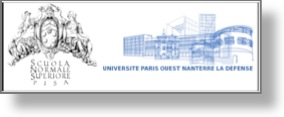Phonotactic grammar: theories and models
September 28th – 29th, 2012
Scuola Normale Superiore – Palazzone di Cortona, Arezzo (Italy)
Phonotactic grammar organizes the distribution of phonemes and suprasegmental entities in word sized strings. It is based on categorical rules and probabilistic constraints in the distribution of segments; phonotactic rules and constraints have been shown to be sensitive to several properties of the language, referring not only to phonetic phonological principles but also to the morphological structure of words or their frequency of use. Many psycho-computational models of phonotactic learning have been proposed to account for the development of phonotactic knowledge in the mind of the speaker; they basically induce phonotactic regularities either from segmental properties (such as features and their natural classes), or lexical distributions (such as the information related to the lexical neighborhood of a word), or even a principled balance of both segmental and lexical properties.
This workshop is focused on experimental approaches to phonotactics and phonotactic learning and aims at providing an informal atmosphere for discussion on psychologically and computationally sound models of phonotactic learning and lexical and sub-lexical processing.
Organizers:
Pier Marco Bertinetto (Scuola Normale Superiore, Pisa)
Basilio Calderone (CLLE, CNRS & Université de Toulouse Le Mirail)
Chiara Celata (Scuola Normale Superiore, Pisa)
Bernard Laks (MoDyCo, CNRS & Université de Paris Ouest)
Atanas Tchobanov (MoDyCo, CNRS & Université de Paris Ouest)
-----------------------------------------------------
ASSOCIATE EVENT: Theory and evidence in the study of phonotactics.
A PLM2012 thematic session (8–10 September 2012)
Organizer: Katarzyna Dziubalska-Kołaczyk (Adam Mickiewicz University, Poznań)
Details at: http://ifa.amu.edu.pl/plm/2012/Phonotactics
This session invites presentations of phonotactic projects in which large transcribed corpora of written or spoken texts are investigated and juxtaposed to dictionary data, under the guidance of an adopted theoretical model. The aim of such projects is to arrive at a comprehensive description of the attested clusters of a language with a view to verify an assumed model of phonotactics. Projects which consider morphonotactics will be welcome. Presentations of research aiming at universal phonotactics will also be encouraged.